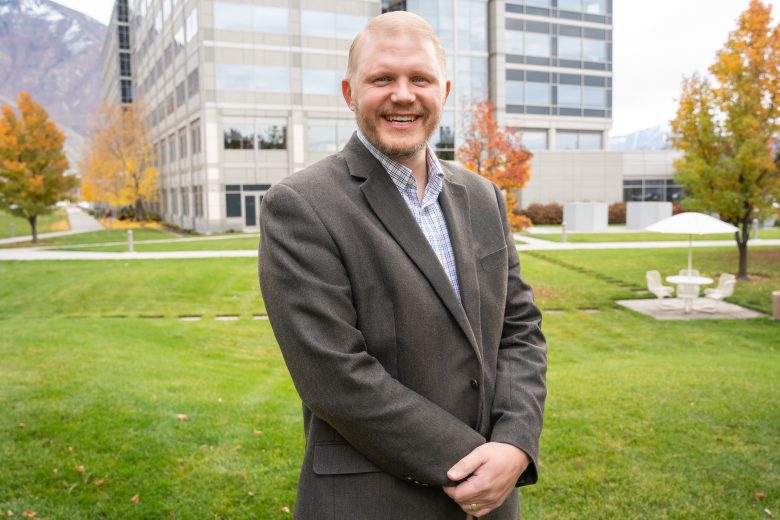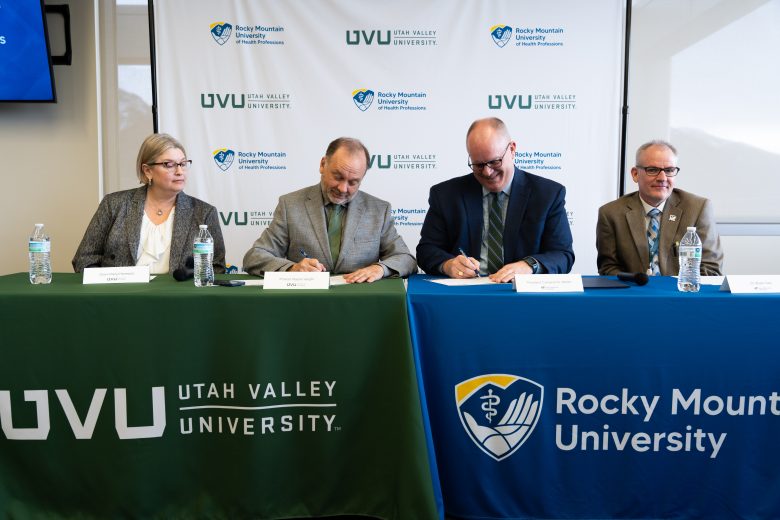
For speech-language pathologists (SLP), the Consensus Auditory-Perceptual Evaluation of Voice (CAPE-V) is a tool designed to provide standardized guidelines for auditory-perceptual assessment of the voice.
While earning their Masters of Science in Speech-Language Pathology (MS SLP) at Rocky Mountain University of Health Professions (RMUoHP), Emily Hartmann and Nathan Cross discovered that they and their peers had confusion regarding characteristics of the voice and how to analyze it.
“In 1981 the Grade, Roughness, Beathiness, Asthenia, Strain Scale (GRBAS) was created, but its reliability has been questioned due to lack of consensus; therefore, the CAPE-V was created in 2002 with plans to include training modules,” said Hartmann.
The CAPE-V helps with identification of vocal features and analyzing deviation in the voice without the use of scientific instruments. The creation of CAPE-V also added more objectivity and accuracy to this practice.
Unfortunately, the CAPE-V is not without its own flaws.
Cross explains that “Tools like CAPE-V help to point SLPs in the right direction, but can only do so with some specificity and with something to compare the deviant voice against.” Due to this, the CAPE-V has struggled with consistency in listeners’ responses.
With these flaws in mind, Hartmann and Cross began to develop their own tool to try and fill in the gaps.
“Emily and I recognized the value in these tools as well as their limitations and decided to create a tool with an accompanying education program to aid SLP graduate students and perhaps all SLPs,” said Cross.
Hartmann and Cross took inspiration from their experiences as students as well as various textbooks and analyses to create the Salient Unified Analysis of Voice (SUAV) tool and its accompanying program.
“To understand what one is hearing, extensive training on the voice and how to rate it is required, which inspired the training module for this tool,” said Hartmann. “The training module utilized voice samples taken from the University of Wisconsin’s online database as references for people to calibrate their ears. It also utilized voice analysis research by Jody E. Kreiman and colleagues.
Once they had created their tool, all that was left was to test it out.
The SUAV tool was put through two separate trials. The first group consisted of 27 MS SLP students in-person. “The data and results of the first trial informed refinements of the SUAV tool and training program,” said Hartmann.
The results for the first test were then used to improve the SUAV tool and training program before it was delivered (via Zoom) to a second group consisting of 39 MS SLP students.
“The second trial commenced with a brief review of the SUAV textual definitions and aural anchors, followed by the practice portion, and concluded with the rating of the final three voice samples,” explained Hartmann. “Due to complications with survey completion, 18 valid responses were collected.”
After both trials, Hartmann and Cross reviewed the overall effectiveness of the SUAV tool and its accompanying program. They found that the SUAV outperformed the CAPE-V in nearly every category.
Both Hartmann and Cross hope to use the results of their study in a meaningful way in the future.
“Our study was conducted with a relatively small group of participants and is merely an initial step into what we hope to accomplish with the SUAV,” said Cross.
Hartmann states that in the future she hopes to see further development of the SUAV tool.
“Some possibilities include adapting the SUAV into a website or app that can be accessed anywhere or using the training program as stand-alone education before using any voice analysis tool,” said Hartmann.
Cross adds that he hopes to see “additional studies conducted on the SUAV with greater numbers of participants.”
Despite being students when creating the SUAV, Cross and Hartmann were already making a significant contribution to the SLP profession. They attribute their success to the MS SLP professors, especially advisor Phil Sectem, PhD, CCC-SLP, and to each other for getting this far. “I know I couldn’t have chosen a better partner and colleague to work with throughout the course of the study and look forward to continuing working together in the future,” said Cross. As for the professors, “They have experience and knowledge when it comes to the topics we research…they care about our success and love to help others grow as a lifelong learners.”
With the help of everyone involved, Cross and Hartmann presented their research at the summer 2021 RMUoHP Scholarship Symposium and later at The National Fall Voice Conference 2021 held in Miami, FL.



